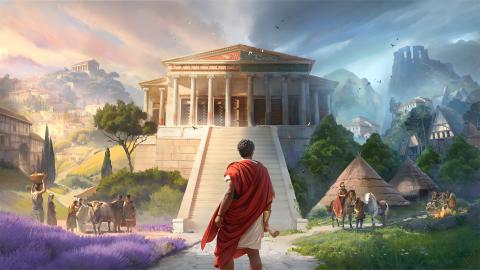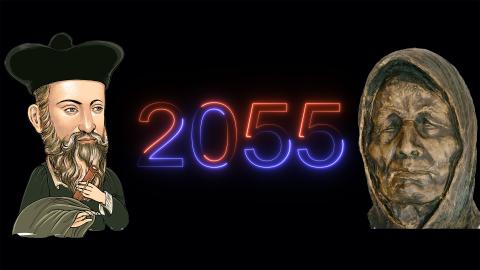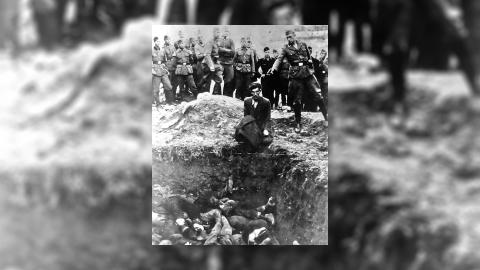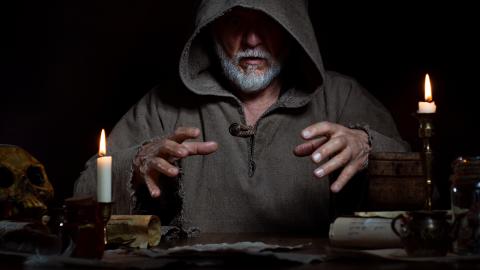The historical legacy of the Knights Templar
The second season of Knightfall comes to a dramatic end with the enemies of the Knights Templar tearing down this once-mighty order. Landry du Lauzon and his brothers fight for survival in the face of Philip IV’s vengeful wrath, and the odds are heavily against them.
The real-life Templars met their end in the early 14th Century, victims of a sustained vendetta which they could not have seen coming. While conspiracy theorists like to imagine the Templars still exist in some form today – perhaps plotting darkly with the Illuminati in secret underground lairs somewhere – the order of warrior-monks really was wiped from existence in the 14th Century. Yet, while their downfall was violent and permanent, the Templars had already re-shaped Europe by that point.
Take the Crusades. While the order didn’t actually exist when the First Crusade was launched in 1095, the creation of the Knights Templar in the years following the Christian conquest of Jerusalem would have a huge impact on the conflicts to come. The original mission statement of the Templars may have been a modest one (they were created simply to serve as bodyguards for pilgrims coming from the west), but they soon evolved into an elite fighting force, playing a crucial role in the Second Crusade which launched in 1147 in response to the fall of a Crusader state to Muslim forces.
The formidable Templar presence in the Holy Land would be of key importance in numerous battles during the Crusades
The Second Crusade turned out to be a fiasco, with the Christian forces disorganised and poorly led by Louis VII of France and Conrad III of Germany, who were ramshackle strategists. Thankfully, the Templars were also there to back up the beleaguered troops, and their intervention helped prevent it from becoming a more catastrophic defeat than it was.
The formidable Templar presence in the Holy Land would be of key importance in numerous battles during the Crusades, and the order left lasting traces across the Middle East and the eastern Mediterranean. Examples include Chastel Blanc, a craggy fortification in Syria, and the still-picturesque Château Pèlerin fortress in Israel. But, while the order’s original aim and reason for existing was to boost the Christian presence in the east, the Templars’ greatest, lasting impact was on Europe.
That’s because the organisation went from being a poor, rag-tag rabble of knights to arguably the first multinational corporation on the planet. The turning point came in 1139, when the Pope issued a papal bull granting the Templars special privileges. The order was to receive spoils of war from the Crusades and enjoy freedom from taxation wherever they were. Indeed, the Templars were answerable only to the Pope himself, rather than to the rulers of the nations in which they were based.
On top of this, the order was lavished with donations from wealthy patrons, eager to demonstrate their Christian credentials by supporting a movement renowned for its piety (to look at just one example, Alfonso I of Aragon even bequeathed a portion of his kingdom to the Templars). The order became wealthy enough to set up what was the first banking system throughout Europe and the Levant, issuing pilgrims with letters of credit which proved invaluable for arduous journeys to the east. Instead of having to lug their riches with them, the travellers could deposit their money with a Templar house close to home, then use the letter of credit to withdraw that amount from another house when they reached their destination.
Such was the wealth and influence of the Templars that England’s Henry III pawned the crown jewels to the order to raise much-needed money. Members of the order also served as tax collectors for the Catholic Church during the Fifth Crusade, with Templars across Europe gathering funds and then using their sophisticated system of preceptories to channel the money to the Crusaders. When Louis IX of France was taken hostage during the Seventh Crusade, it was the Templars who had the resources to pay the ransom for his safe return.
The wealth and influence of the Templars, their connections to monarchs and the highest-ranking members of the Catholic Church, meant they operated as envoys, negotiators and diplomats as well as bankers and insurers. One symbol of their power in England is the still-standing Temple Church in London, which was consecrated in 1185 and once served as the royal treasury. The circular shape of the church embodied the knights’ reverence for Jerusalem’s Church of the Holy Sepulchre and its rotunda, said to contain Christ’s tomb. This architectural style can also be seen in another lasting and iconic Templar landmark, the Convent of Christ in Tomar, Portugal.
But did the Templars have an influence on the creators of grand medieval buildings – the masons? Rumours have long swirled about the possible links between the Templars and the Freemasons. The fact is, the earliest Masonic document, known as the Halliwell or Regius Manuscript, dates back to the 15th Century, several generations after the Templar order was abolished. Modern Freemasonry – a fraternal organisation which merely pays symbolic homage to the actual stonemasons of the medieval period – came into being even later than that.
That said, such is the mythic resonance and romance of the original Templars that organisations still pay homage to them now – the most obvious being the current-day Knights Templar fraternal organisation, which promotes chivalry and Christianity within a Masonic structure.
Conspiracy theories have tried to tie the Templars to world-historical events such as the French Revolution. While these are tall tales, it’s worth noting that the Portuguese Templars were reconstituted as the Order of Christ in the 14th Century. The wealth and influence of this new organisation helped spur Portuguese voyages to islands in the Atlantic during the Age of Discovery. Indeed, Prince Henry the Navigator of Portugal, a key figure of the Age of Discovery, was a Grand Master of the Order of Christ.
So, it could be argued the Templars’ greatest legacy is the role their rebranded descendants played in the conquest of the New World… altering the entire course of human civilisation.
















